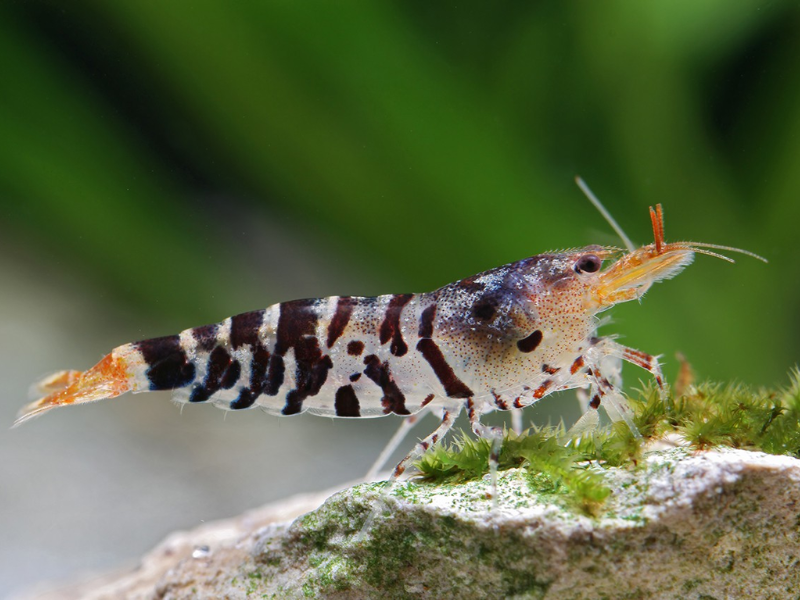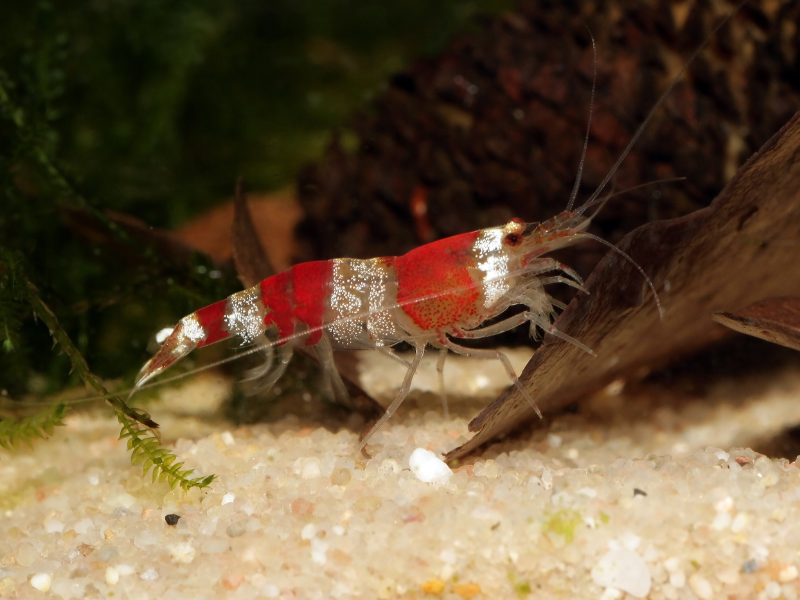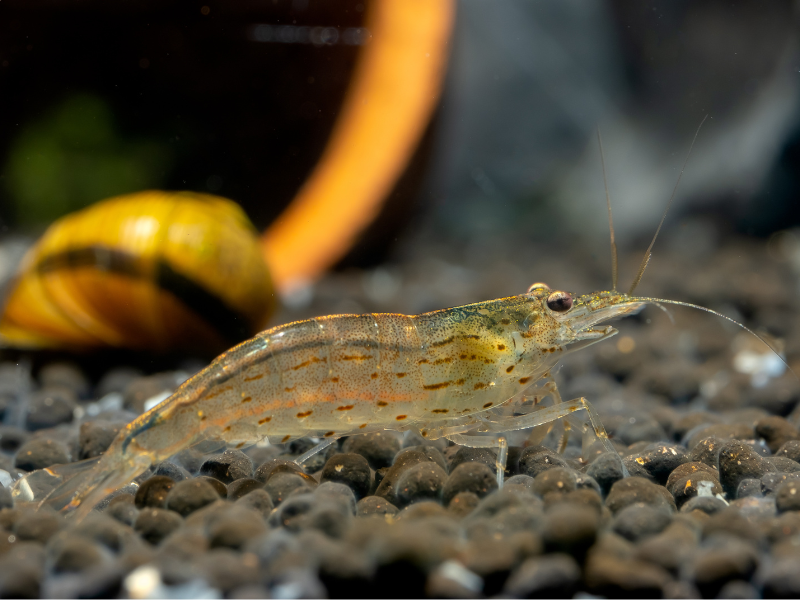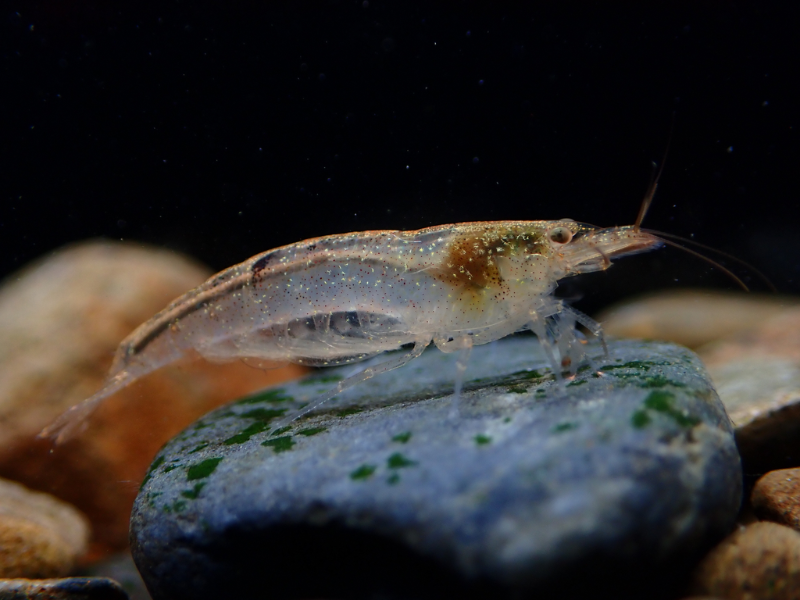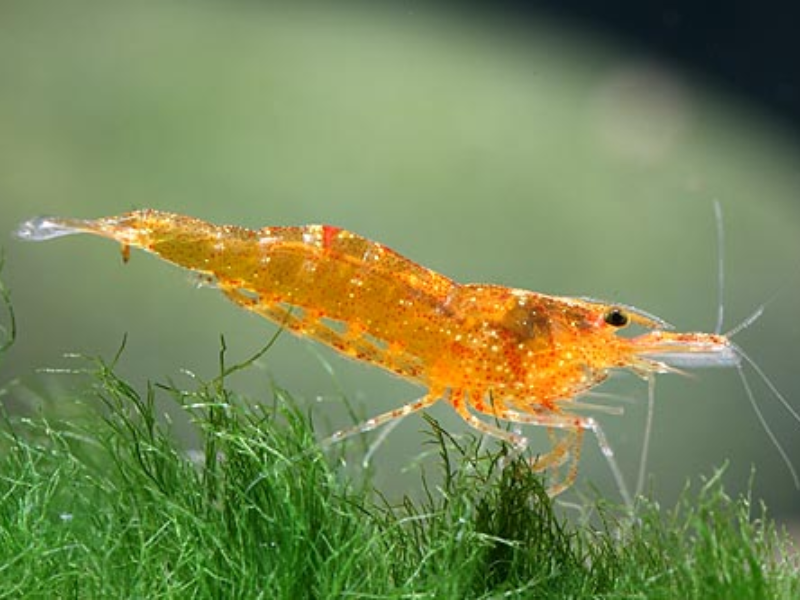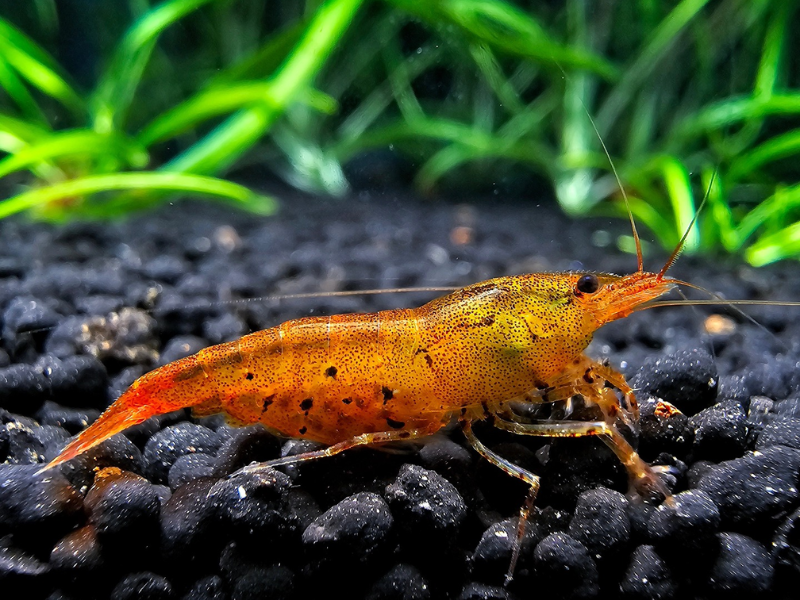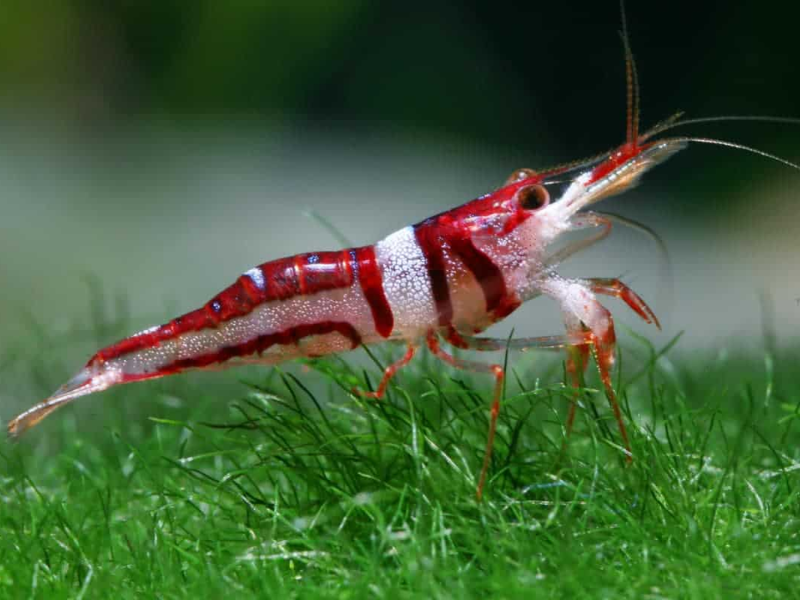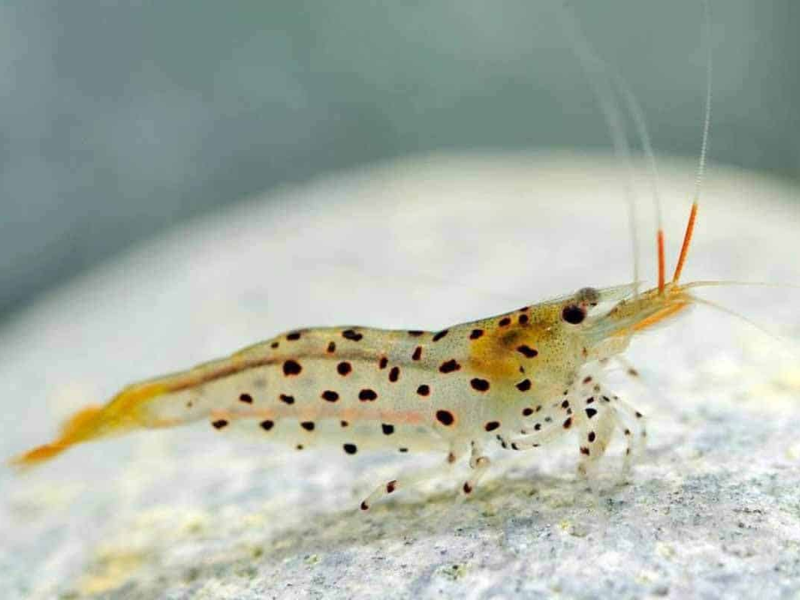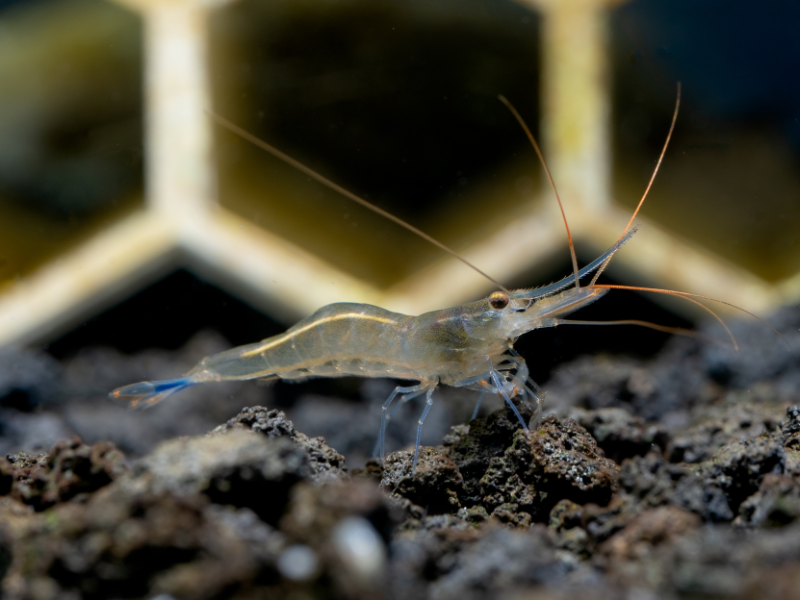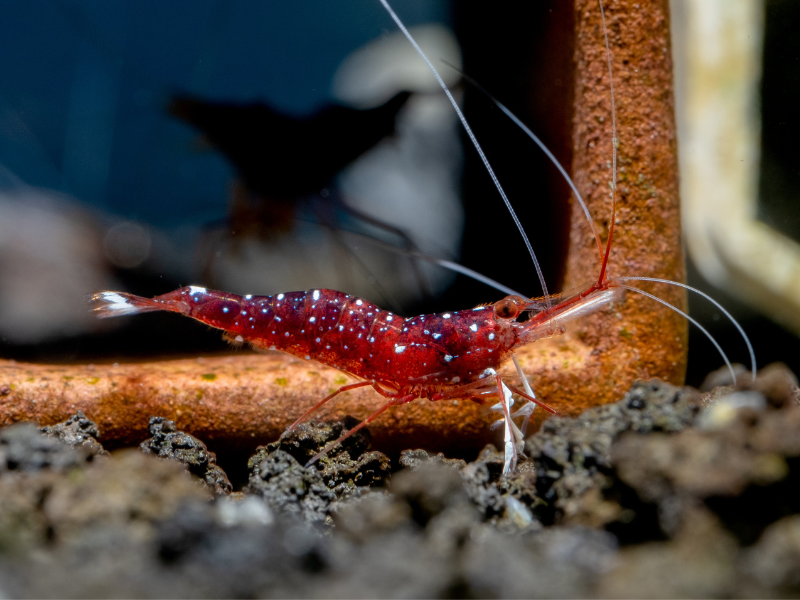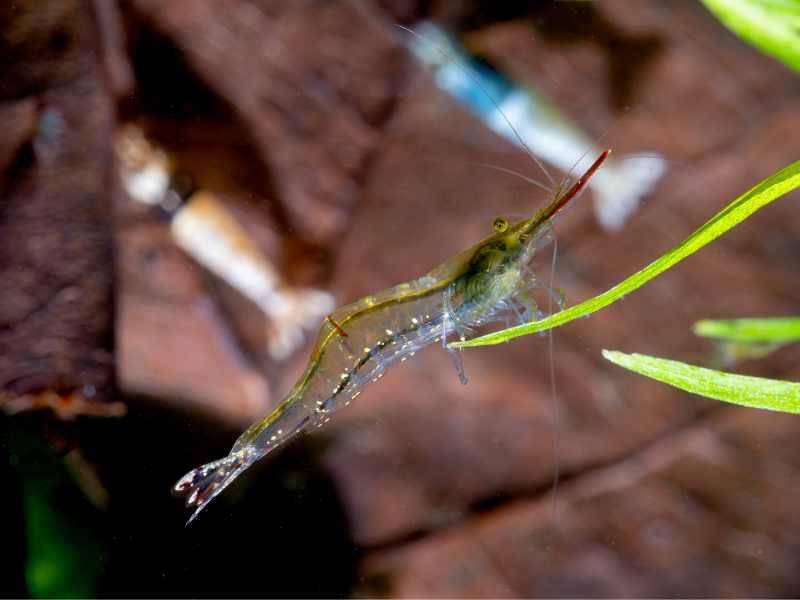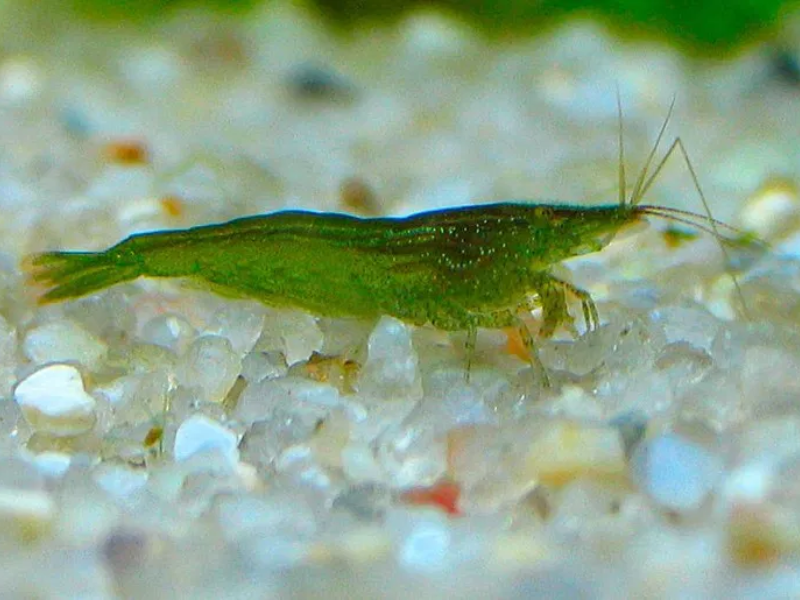Caridina cantonensis
Bee Shrimp
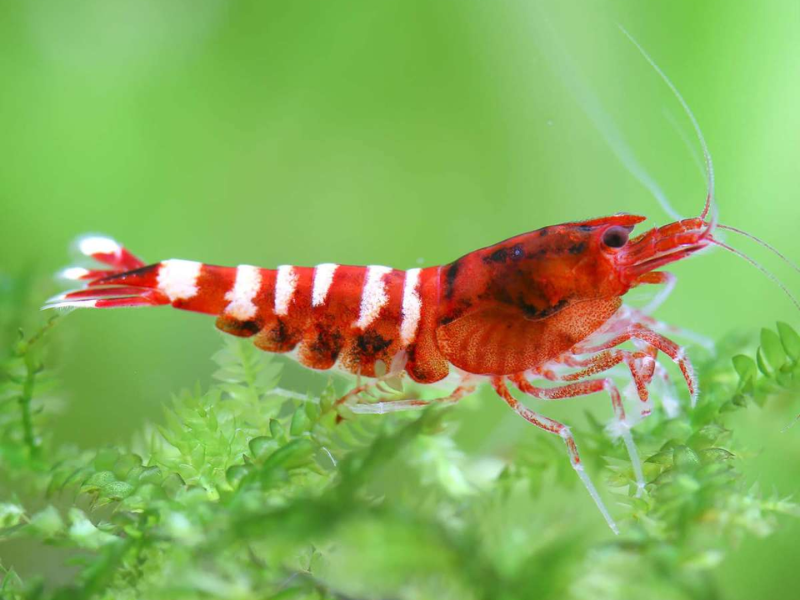
Scientific Classification
Quick Stats
Aquarium Building Information
About This Species
Basic Description
Detailed Description
A native of Asian stream habitats, the Bee Shrimp (Caridina cantonensis) is a popular but challenging crustacean in the aquarium hobby, demanding precise and stable conditions that replicate its natural environment. These shrimp originate in cool, clean, and slow-moving bodies of water that are characteristically soft and slightly acidic. Recreating this environment is the key to their long-term health and is why they are considered difficult to keep. Success typically requires the use of reverse osmosis water remineralized to a specific, low mineral content, along with an active substrate to help buffer the water to a reliably low, acidic pH. They are extremely sensitive to ammonia, nitrites, and nitrates, necessitating a fully cycled and mature aquarium.
In a suitable environment, these shrimp exhibit fascinating behaviors. As a shoaling species, they require the company of their own kind and should be kept in groups of ten or more. A larger colony not only reduces stress but also encourages more confident and natural foraging activity. They are primarily bottom-dwellers, spending their days meticulously picking at every surface in the tank. This behavior is linked to their diet as detritivores; they consume biofilm, algae, and any decaying organic matter they find. This makes them an excellent, though small, part of a tank's cleanup crew. Their diet should be supplemented with high-quality sinking shrimp pellets, algae wafers, and blanched vegetables to ensure complete nutrition. Due to a low metabolism, they should be fed sparingly every other day to prevent fouling their sensitive environment.
Choosing tank mates requires careful consideration. Their small adult size and timid nature make them vulnerable to predation and stress. Large, boisterous, or even moderately aggressive fish are unsuitable. The best companions are other small, peaceful shrimp, snails, or micro-fish that occupy different water columns and will not compete for food or territory. A well-planted tank with plenty of mosses, leaf litter, and other hiding spots is essential for providing security and additional grazing surfaces, helping these delicate creatures to truly thrive.
Scientific Description
Caridina cantonensis is a small decapod crustacean belonging to the Atyidae family, a group known for its freshwater shrimp species. Its body morphology is compressiform, or laterally compressed, which is characteristic of many shrimp. Originating from specific stream ecosystems in Asia, this species has evolved within a very narrow range of environmental parameters, specifically cool, soft, and acidic freshwater. This adaptation is a primary factor in its classification as 'Vulnerable' on the IUCN Red List, as its natural habitats are susceptible to pollution and environmental changes.
Physiologically, C. cantonensis is distinguished by a low metabolic rate, very low oxygen consumption, and consequently, a very low rate of waste production. This low bioload factor means they have a minimal impact on their aquatic environment’s nitrogen cycle, but it also reflects their extreme sensitivity to nitrogenous wastes like ammonia and nitrite. Their survival in captivity is contingent on maintaining pristine water quality that mimics their native habitat. Their role in the ecosystem is that of a benthic detritivore and a critical biofilm consumer. They spend the majority of their time grazing on submerged surfaces, feeding on microorganisms, algae, and organic detritus. This foraging behavior plays a vital part in nutrient cycling within their natural environment.
Socially, C. cantonensis exhibits shoaling behavior, congregating in groups for foraging and security. This behavior is a typical defense mechanism for small organisms that occupy a low trophic level. In a community, their small size and non-aggressive nature make them susceptible to stress when housed with larger or more active species. Their breeding strategy is also indicative of their specialized evolution, as reproduction is triggered by specific and stable environmental conditions rather than seasonal cues, highlighting their dependence on a consistent and unchanging habitat.
Breeding Description
Breeding the Bee Shrimp is considered a significant challenge and is typically recommended only for experienced aquarists. Success hinges on providing exceptionally stable and specific water parameters, which necessitates a dedicated, species-only breeding aquarium. The general difficulty lies not in the breeding act itself, but in maintaining the pristine conditions required to trigger spawning and, more importantly, to ensure the survival of the delicate offspring. For a healthy breeding colony, a balanced ratio of males to females is beneficial, though a group with slightly more females can increase the potential for continuous breeding.
Distinguishing between sexes is key to establishing a breeding project. Females are generally larger and more robust than males. The most reliable indicator is the female's deeper, more rounded underbelly (pleura), which forms a protected chamber for carrying eggs. In contrast, males are more slender and have a straighter underline. Mature females may also display a visible 'saddle' on their back, which contains undeveloped eggs in the ovaries.
This species is an egg-layer. Following a successful molt, a receptive female releases pheromones to attract a mate. After a brief mating, the female transfers the fertilized eggs to her swimmerets, located on the underside of her tail. She will carry and fan these eggs for several weeks, providing them with oxygen until they hatch. Unlike some crustaceans, the Bee Shrimp hatches fully formed, miniature versions of the adults, bypassing a free-swimming larval stage.
Caring for the newly hatched shrimplets requires no special intervention in a mature tank. They are immediately independent and will begin grazing on the same sources of food as the adults: biofilm, algae, and microscopic detritus. Therefore, a well-established aquarium with abundant surfaces, such as sponge filters, mosses, and leaf litter, is critical for their survival. It is absolutely essential to use a sponge filter or cover any filter intakes with a fine mesh to prevent the tiny, fragile shrimplets from being accidentally suctioned.
Generate Printable Card
Create a printable card for this creature to display in your store or aquarium. The card includes a QR code for quick access to more information.
